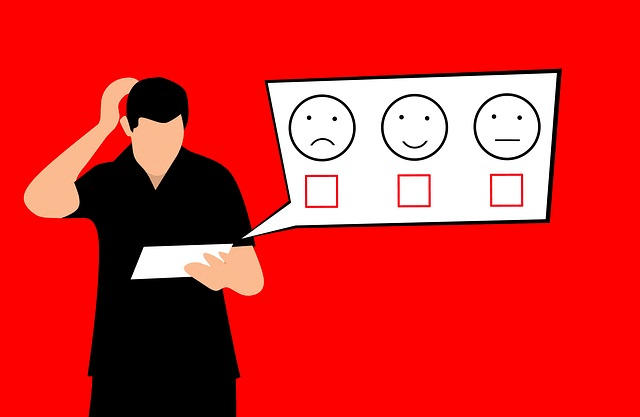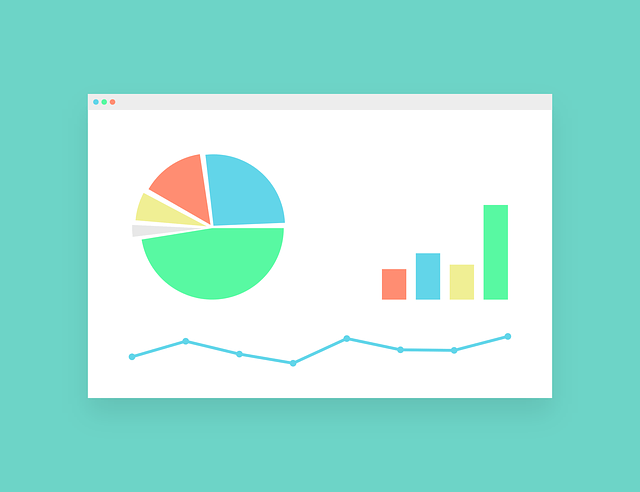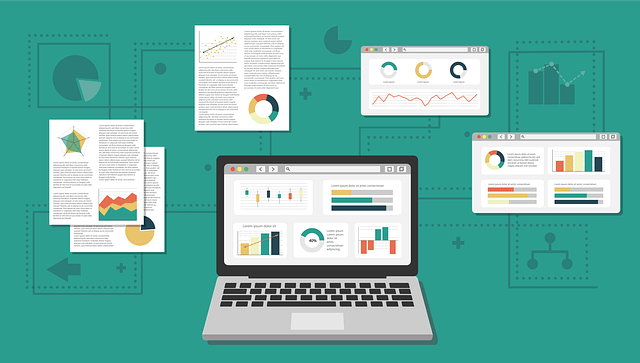Customer Experience Metrics: What You Need to Know

Table of Contents
You’ve heard it before: customer experience is the new marketing.
If you’re like most business leaders, you might be asking yourself some important questions: What are the best ways to measure customer experience? How do I use those metrics to improve my business? Where can I find the answers? And does this even matter for my business?
The truth is that customer experience metrics are important for every business, no matter how big or small. When you know what kind of data you’re looking for and where it lives, you can start making smarter decisions about how to improve your customer experience and increase sales.
In this guide, we’ll go from beginner’s level to advanced, so you’ll know exactly what key performance indicators (KPIs) you should be tracking, what tools will help you track them, and how to use that information for better decision-making in your business.

Success comes from creating the right conditions
Before you can figure out what KPIs are important to track and why, you need to make sure that you have the basics in place. This is especially true if you’re new to the world of customer experience or if it’s been a while since you’ve done any analytics work.
If you’re new to analytics and customer experience, we recommend starting with these resources:
- The Ultimate Guide to Customer Experience
- What is Voice of Customer (VoC)?
- How to Set Great Customer Experience KPIs.
Once you’ve got a good grasp on the basics, the next step is figuring out what data you want to track and how it will help inform your decisions about customer experience.
It’s important to remember that there are no hard and fast rules regarding KPIs; each business has its own specific needs, goals, and challenges that make one set of metrics more effective than another.
Measuring and improving your customer experience requires you to ask two important questions:
- What outcome are you trying to achieve?
- What do you need to measure to determine whether you’re achieving that outcome?
If you can answer these questions, you will be well on your way to success.
The answer to the first question will determine how you measure your customer experience. The answer to the second question will help you identify which metrics are most important for measuring your customer experience.
Next, let’s take a look at some of the most common customer experience metrics and how they can be used to improve your business.

Voice of the Customer metrics
Customer-reported metrics, including Voice of the Customer, are the most common type of metric used to measure customer experience. These metrics include ratings and reviews, customer satisfaction surveys, NPS (Net Promoter Score), customer satisfaction scores, and more.
These metrics can be very useful in giving you a snapshot of how your customers feel about your business. However, they aren’t always the best way to measure customer experience because they tend to only capture what people say (or write) rather than what they do.
For example, if one of your metrics is an NPS score, it’s important to note that this only measures how likely customers are to recommend your business (and not whether they’re doing so).
Despite this, when it comes to understanding how your customers feel, direct customer feedback remains the gold standard for most businesses. Customer-reported metrics are easy to collect; they don’t require much time or effort on the part of your customers, and they’re fairly reliable (which makes them a good first step in understanding customer experience).
So, how can you use customer-reported metrics in your business? Here are a few examples:
Net Promoter Score (NPS)
NPS is a customer loyalty metric that measures the willingness of your customers to recommend your business to others. It’s important because it helps you identify who you should focus on attracting and keeping as loyal customers—those who are likely to spread positive word-of-mouth about your company and refer new customers.
Customer Satisfaction Score (CSAT)
CSAT is a customer satisfaction metric that measures how satisfied your customers are with the quality of your product or service. It’s important because it helps you identify what aspects of your offering need improvement, so you can continue providing a better experience for your customers.
Customer Effort Score (CES)
CES is a customer experience metric that measures how easy it is for customers to complete tasks related to interacting with your brand. It’s important because it helps you identify whether there are any friction points in the customer journey—places where people have trouble completing an action they want to take (such as booking an appointment).
Customer Loyalty Index (CLI)
CLI, or Purchase Propensity, is similar to NPS. It is a metric that measures the likelihood of a customer continuing to do business with you following their purchase or experience. It can be used to predict customer retention, churn, and loyalty.
Overall Satisfaction (OSAT)
Overall Satisfaction is a measure of how satisfied customers are with the overall experience they have when doing business with you. It helps to identify pain points, as well as strengths and weaknesses in areas such as delivery time, product quality, price point, customer service, etc.

Business metrics
Business metrics are important because they help you measure the impact of your customer experience efforts. They show how well you’re running and how much revenue you’re generating. They also give you a baseline that allows you to track progress over time, so you can make sure your improvements are making a difference for your customers.
Business metrics can be further divided into two categories: financial and non-financial.
Financial metrics
Financial metrics, such as Customer Acquisition Cost (CAC) and Customer Lifetime Value (CLV/CLTV), are metrics that track how much it costs you to acquire a customer and how much they’re worth. These metrics help you understand the return on investment (ROI) of your customer experience efforts, so that you can make sure they’re generating a positive ROI.
Key financial metrics include:
- CAC (Customer Acquisition Cost)
- CLV/CLTV (Customer Lifetime Value)
- ARPU (Average Revenue Per User)
- ARPA (Average Revenue Per Account)
- Customer Churn Rate
- Customer Retention Rate
- Up-sell and cross-sell rates and values
Non-financial metrics
Non-financial metrics, such as Average Resolution Time (ART) and employee engagement, help you understand how well your business processes are performing. They can reveal important insights about the health of your company and give you a snapshot of what’s going on in key areas within your organisation.
Customer service metrics
Customer service is critical to building, maintaining, and growing a business. You can use customer service metrics to measure customer service success rates, optimise the performance of your customer service teams, and identify opportunities for improvement.
Here are some customer service metrics you can track:
- Customer Service Satisfaction Score
- First call resolution rate (FCR)
- Average Resolution Time (ART)
- Response time
- % of customers with quality issues
- Recurring complaints to total complaints
- Length of the support ticket queue
- Number of questions to customer support per month
- Rate of closure by type of resolution
Customer engagement metrics
Customer engagement measures the level of customer loyalty, engagement, and satisfaction. You can use customer engagement metrics to track how your customers feel about your brand, products, and services.
Here are some examples of customer engagement metrics:
- Visitor-to-lead conversion rate
- Lead-to-customer conversion rate
- Daily active users (DAU)
- Monthly active users (MAU)
- Visit frequency
- Social media engagement
- Social media sentiment
- Third-party reviews
Employee engagement metrics
Tracking employee engagement metrics can help you understand how your employees feel about their jobs and the company. You can use these metrics to measure employee satisfaction, identify areas of improvement, and reward top performers.
Here are some examples of employee engagement metrics:
- Employee Turnover Rate
- Employee Satisfaction Score
- Employee NPS (eNPS)
- Employee Retention Rate
- Employee Referral Rate
- Employee Feedback Survey

Next-generation metrics for customer engagement
We are on the brink of a new era in customer experience. Given the rapid pace of digital transformation, it’s not surprising that customer experience and engagement are taking on new forms. Business leaders demand more accurate insights into how customers feel and act, rather than just what they say.
Recent advances in AI and machine learning, behavioural analysis, sentiment analysis, and natural language processing technologies enable businesses to collect and analyse customer sentiment data at a massive scale, in real time. This allows you to track your customers’ feelings about your brand, product or service not only using your existing surveys and feedback forms, but also from anywhere on the internet!
The next generation of customer experience metrics won’t be created entirely from scratch; it will involve an expansion and evolution of existing ones. We will see more focus on customer experience analytics and using data to make better decisions.
For example, we are already seeing a trend of companies using customer data to create more targeted and relevant offers, and designing delightful, personalised experiences. There is a growing focus on measuring the full customer experience across all touchpoints, rather than just focusing on an individual channel at a time.
As you move forward and expand your customer engagement capabilities, it is important to remember that the customer experience is a journey, not just a moment in time. You need to make sure you are tracking the right metrics and using them in your analysis so that you can truly understand what customers want and how they feel about your brand.

How to get started with customer experience metrics and KPIs
If you’re just getting started with your customer experience programs, it can be overwhelming to think about how to measure the impact of your efforts.
The key to success is to keep it simple. Start with a few key metrics that reflect the most important aspects of your business and its customers, then build from there. If you’re not already gathering direct customer feedback on your experience, start there.
Customer surveys are a great way of measuring customer satisfaction, learning more about customer support interactions, and identifying areas where you’re not meeting customer expectations. You don’t need any special tools or software to get started.
A simple survey can be highly effective, and there are plenty of free services that make it easy to create your first survey:
- Microsoft 365 Surveys - https://www.microsoft.com/en-gb/microsoft-365/online-surveys-polls-quizzes
- Google Forms - https://google.com/forms/about/
- TRACX Surveys - /surveys/
When you’ve built your survey, it’s time to decide where and when to send it out. Some common strategies include:
- Adding a link to your survey in your email signature
- Using a QR code to link to your survey
- Sharing a link to your survey after key customer interactions
While it’s tempting to send your survey to everyone, it’s important to remember that you only want people who are likely to have an opinion on the topic. If you’re surveying customers, send it out to those who have recently interacted with your business or purchased something from you in the last six months.
Unless you’re using a platform designed for collecting customer feedback (like TRACX), it may be hard to analyse the feedback received. This is the reason many businesses choose to start with a dedicated survey software. They allow you to easily create and distribute surveys, as well as analyse the results and track trends over time.

Building your customer experience KPI dashboard
As we’ve discussed, every business will have a different perspective on what makes up a great customer experience. You will need to decide which metrics you should be tracking, and how they relate to your brand experience.
However, all businesses, regardless of the industry they’re in or how large or small they are, should be tracking their customer satisfaction and engagement metrics.
Business reports and customer experience dashboards bring your most important metrics into one place, so that—instead of collecting data from various sources and trying to make sense of it all yourself—you can easily keep tabs on what is going well in your business and where there are opportunities for improvement.
Some popular tools for creating reports and dashboards include:
- GeckoBoard - https://www.geckoboard.com/ (paid)
- DashThis - https://dashthis.com/ (paid)
- Grow - https://www.grow.com/ (paid)
- Google Data Studio - https://datastudio.withgoogle.com/ (free)
- Microsoft PowerBI - https://powerbi.microsoft.com/ (paid)
- Databox - https://databox.com/ (paid)
By aggregating data from multiple sources, these dashboard tools and report builders are a powerful way to keep track of what is happening in your business. They let you see the big picture and make informed decisions about where to focus your efforts and resources.
However, they can also be a bit overwhelming. If you’re not careful, it’s easy to get lost in a complex and confusing array of numbers and graphs. You may find yourself wondering what each metric means and how it applies to the overall health and success of your business.
For businesses that are just getting started, it’s even more important to find a tool that is easy to use. You need something that will provide you with the information you need without overwhelming you or requiring extensive training.
Complete experience marketing toolkits, like TRACX, are designed to make it easy for you to get started. They provide all the tools you need in one place, from feedback surveys to QR codes, with an intuitive interface that makes it easy to find what you’re looking for—even if this is your first experience with a customer experience dashboard.

Understanding your customers and how they feel about your business can help you improve your customer service and make more sales
Today’s customers are driven by experience. If they have a good experience with your company, there is a greater chance that they will return to do business with you again; conversely, if the experience is negative or not what was expected, then it’s likely the customer will take their business elsewhere.
Businesses that track customer experience metrics and KPIs have a significant advantage over competitors who don’t. They can identify what is working and what isn’t. This allows them to improve their processes and make quick changes that can have a significant impact on the bottom line.

Tom Sutton
Co-founder, TRACX
Tom is the co-founder of TRACX, a no-code marketing platform that allows local business owners to collect customer feedback and create engaging marketing campaigns. With over 17 years of experience in entrepreneurship, product development, and marketing for businesses large and small, Tom is currently responsible for developing product and marketing strategies for TRACX.